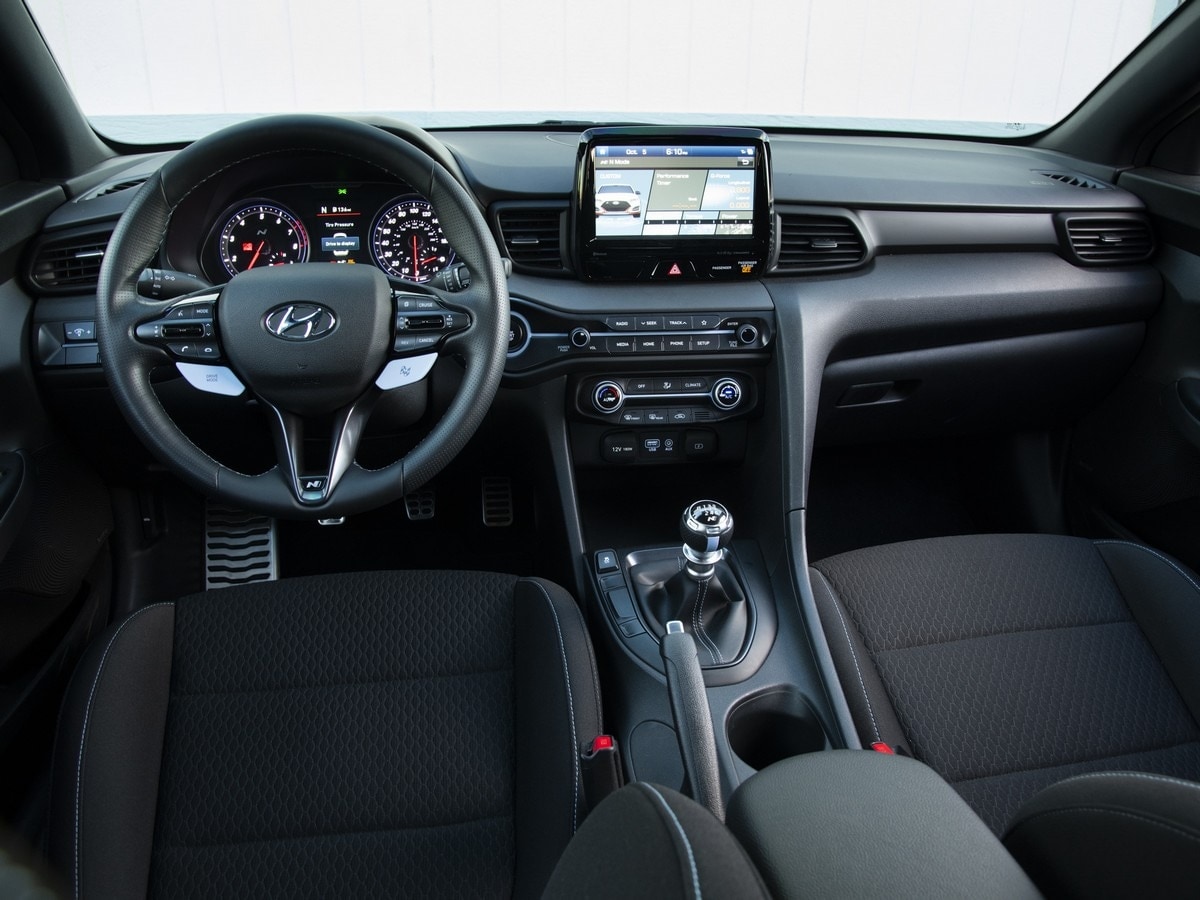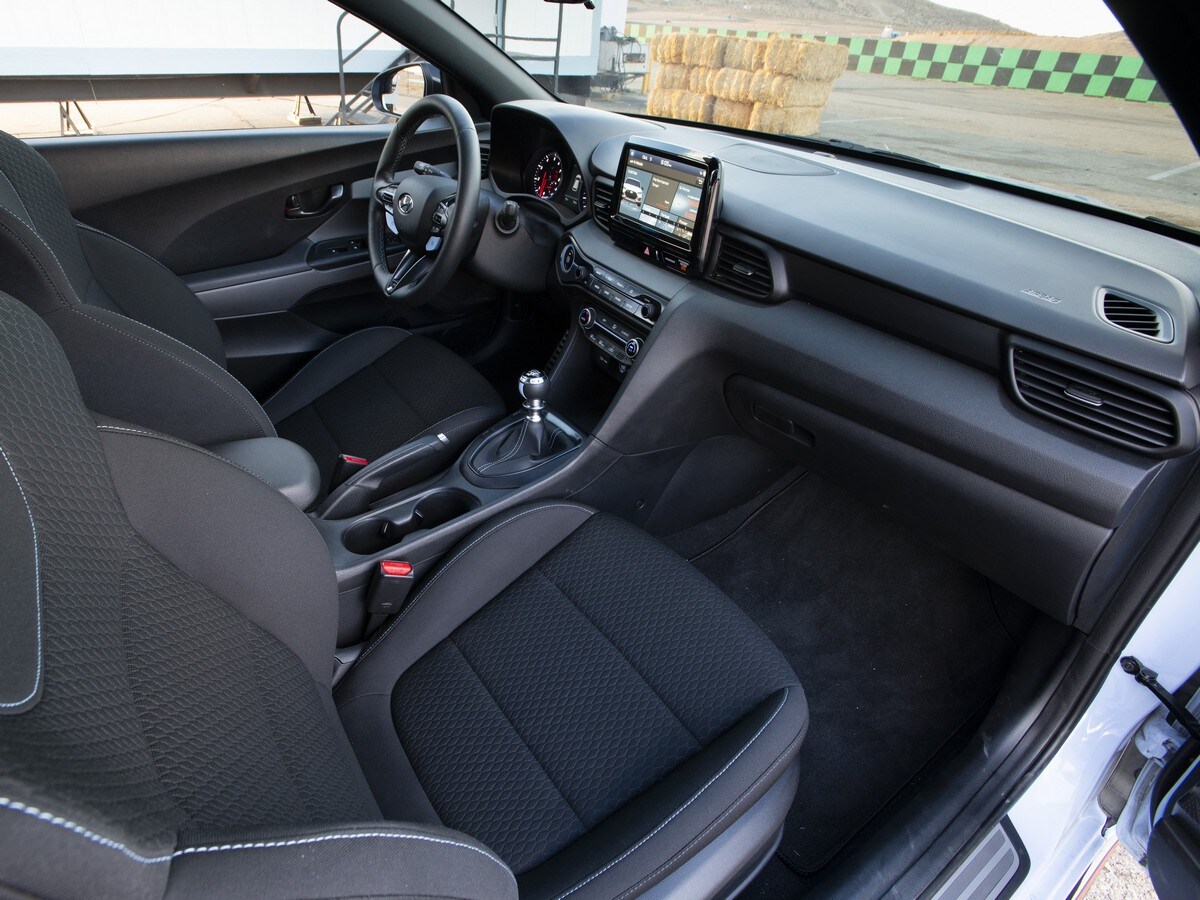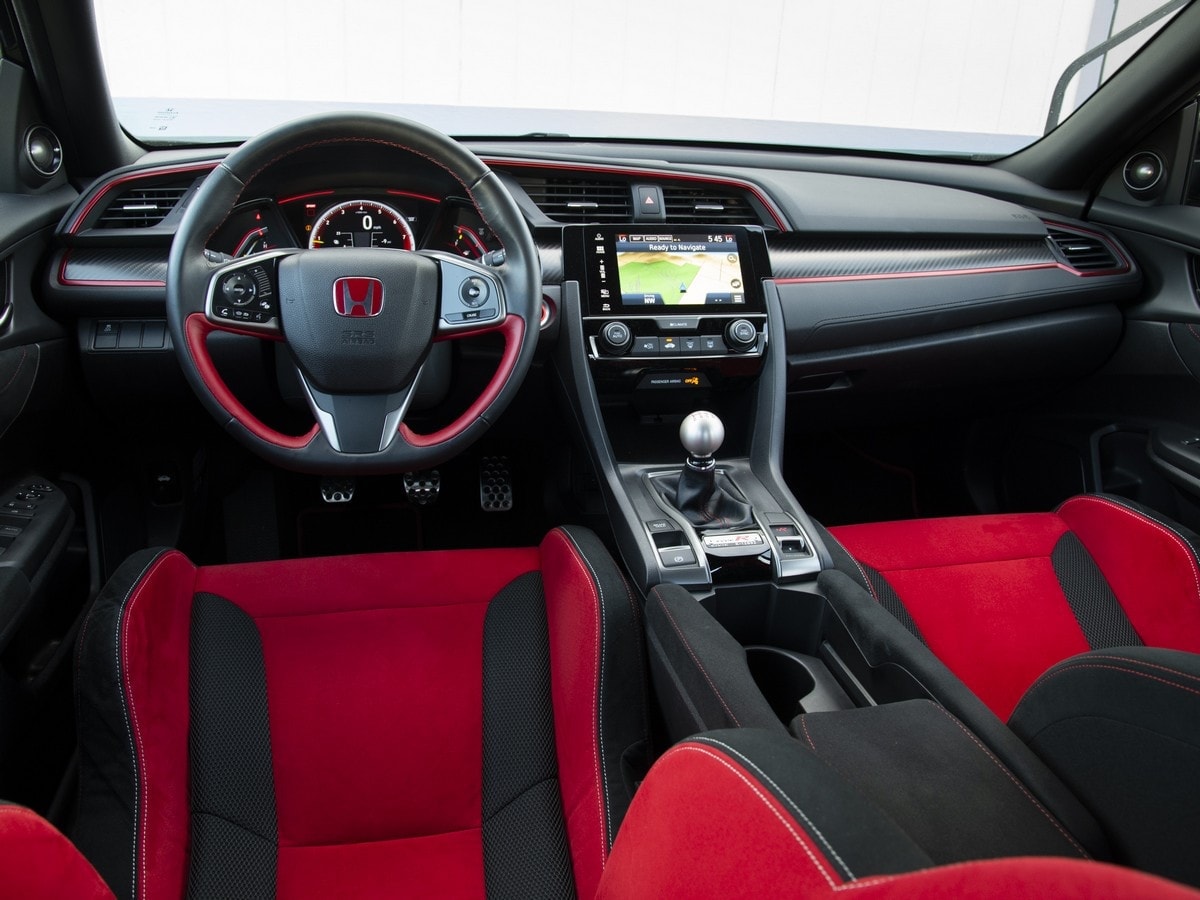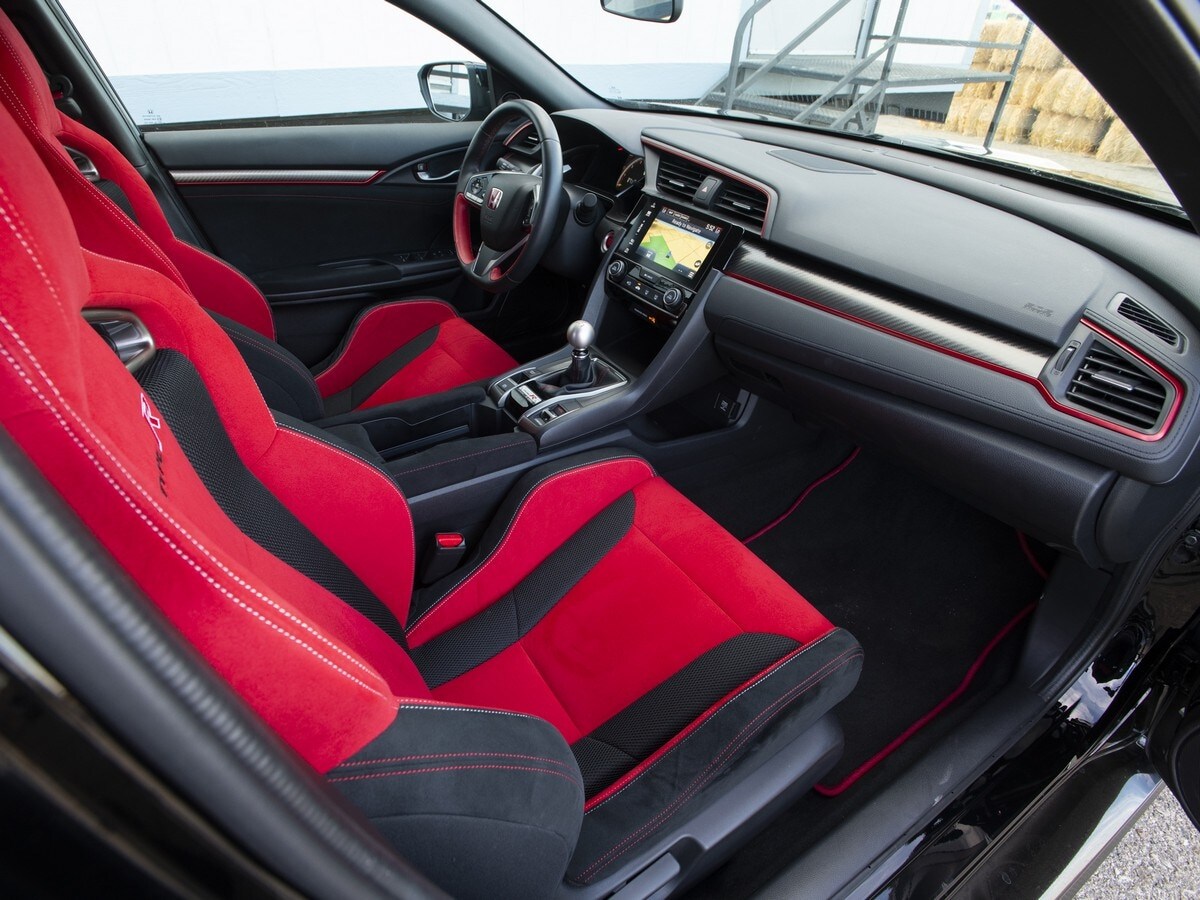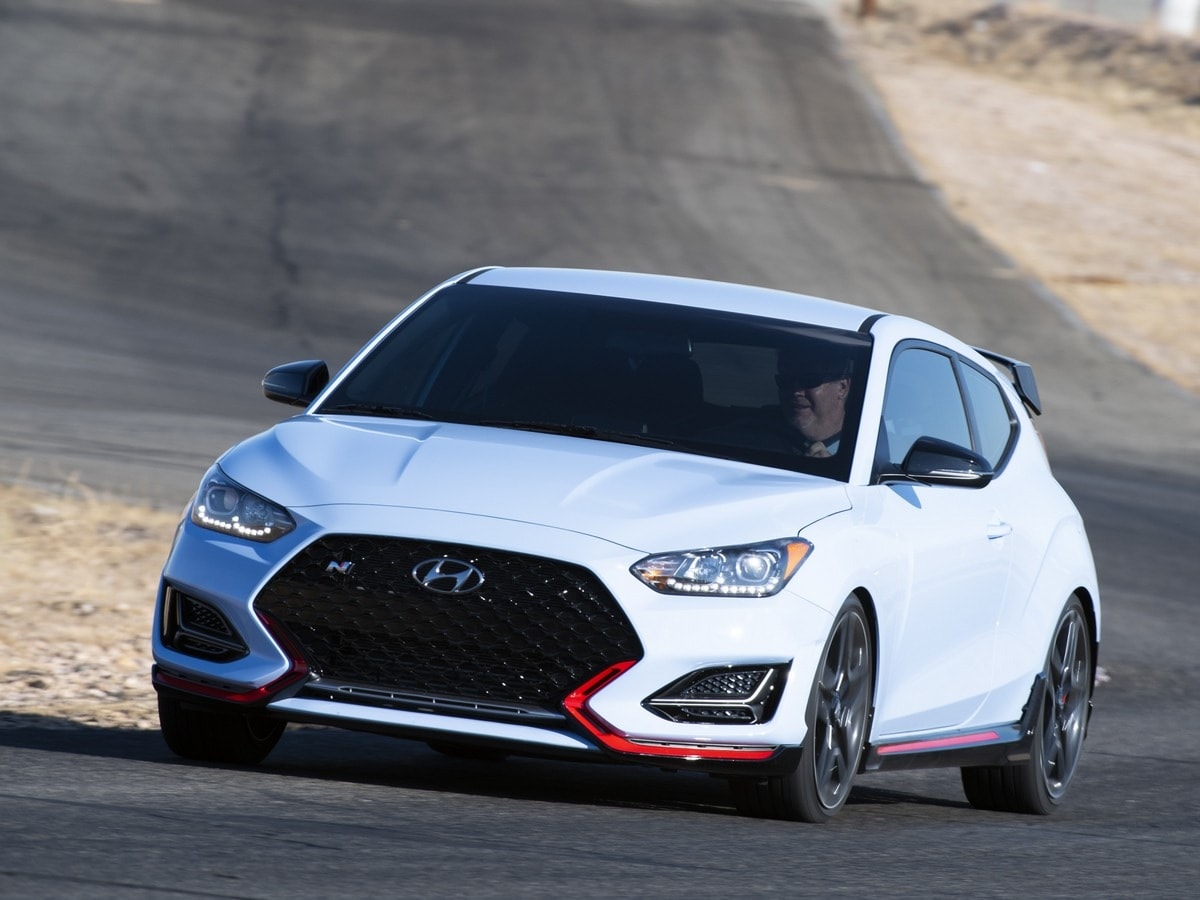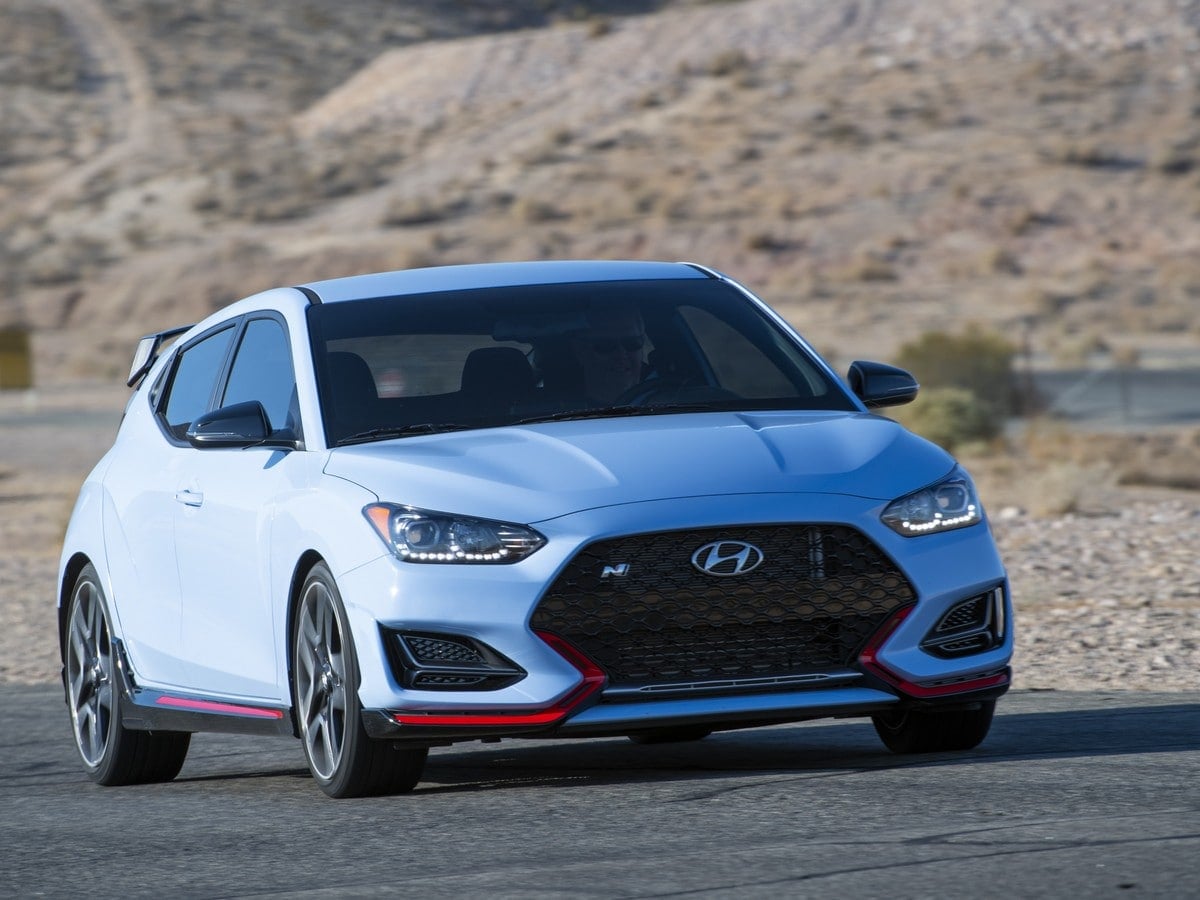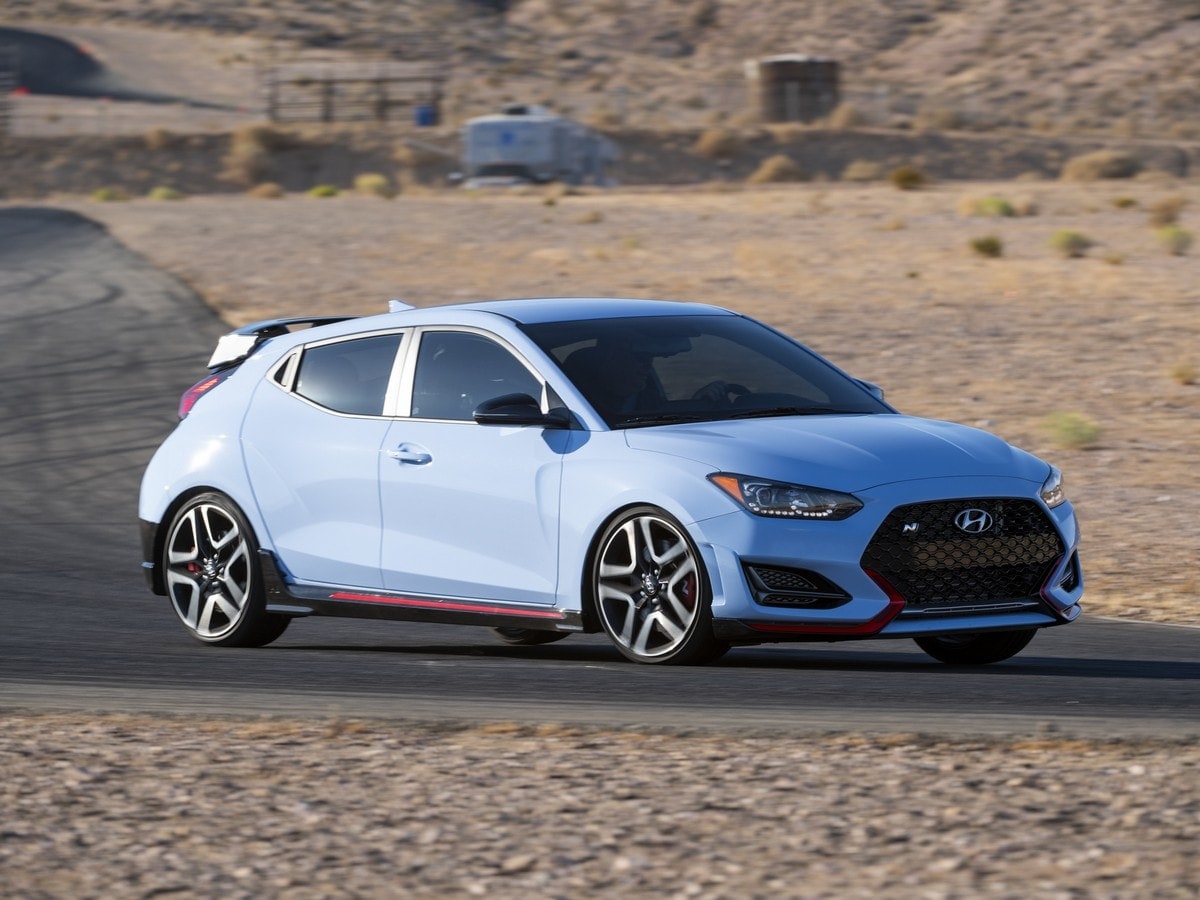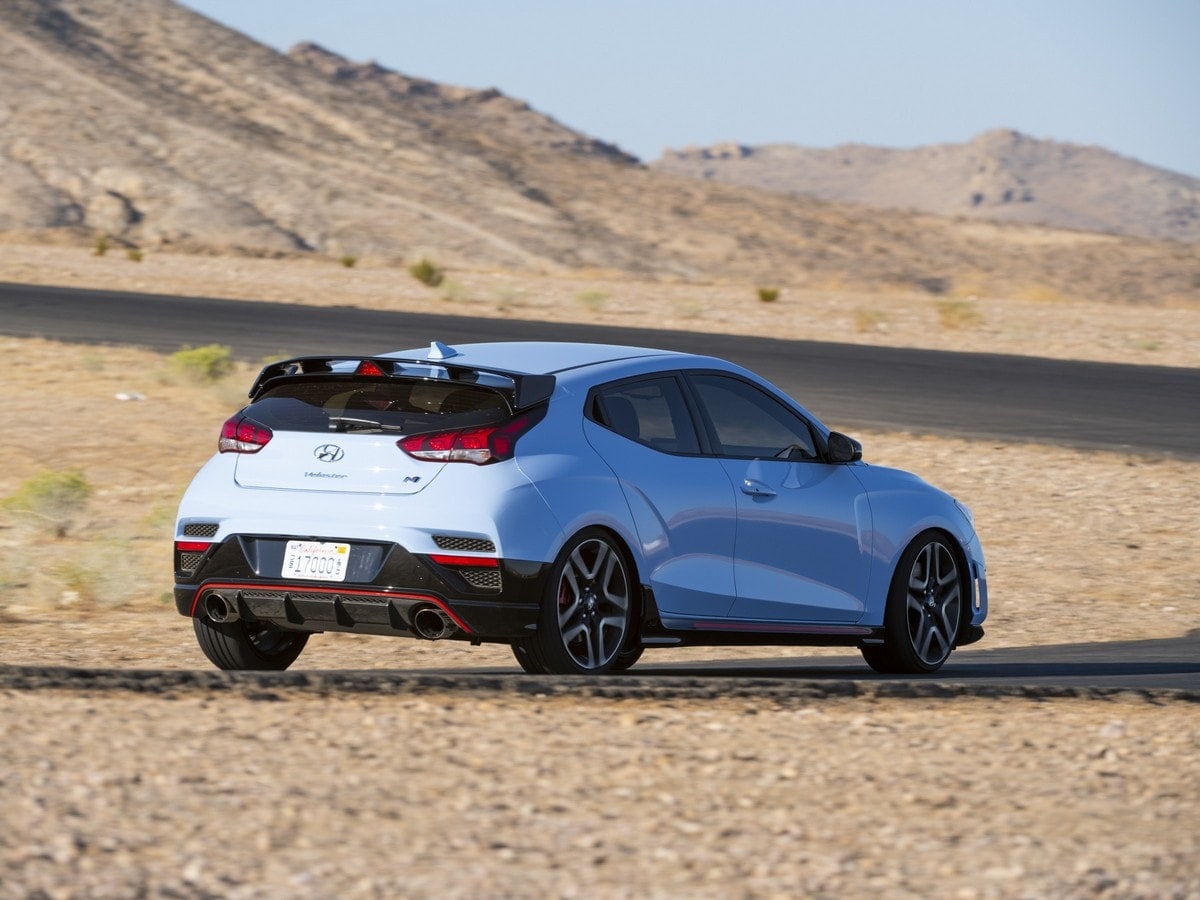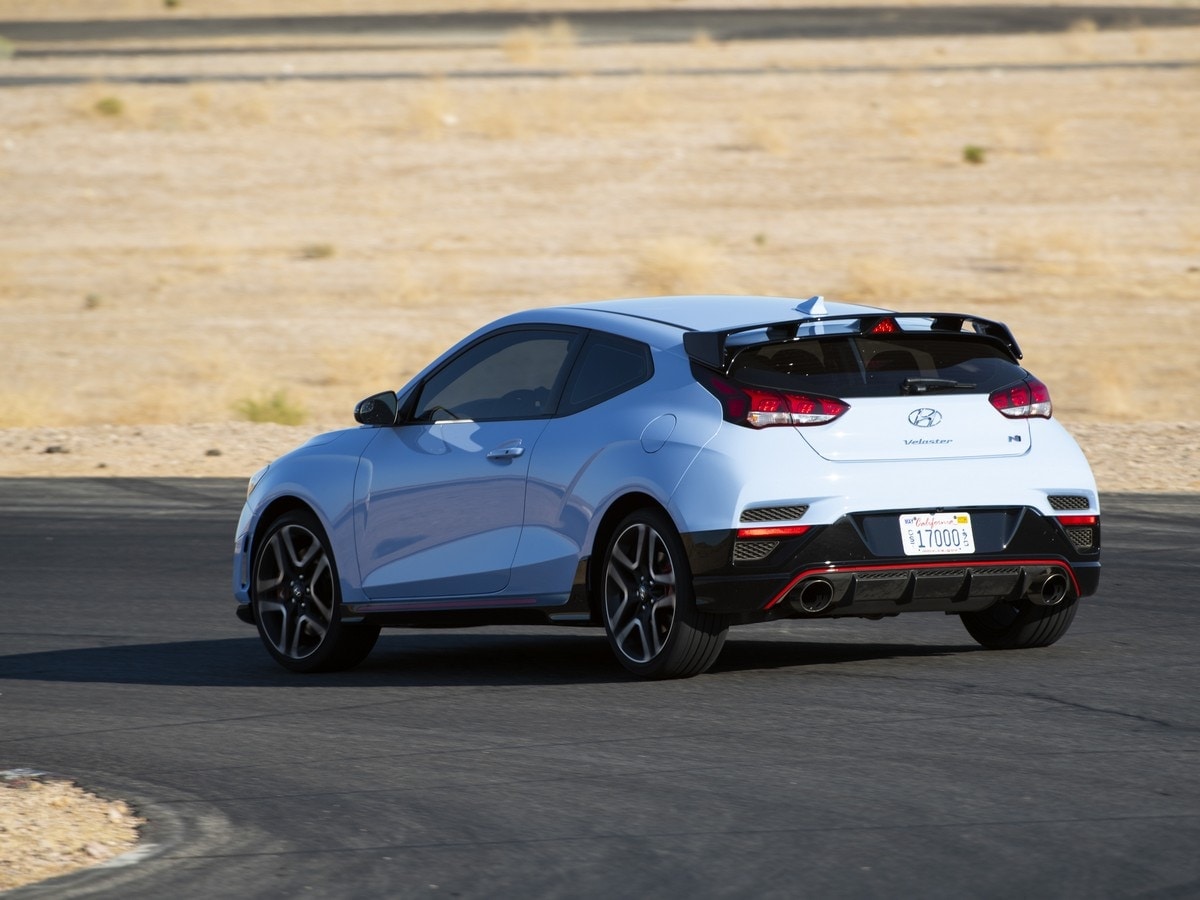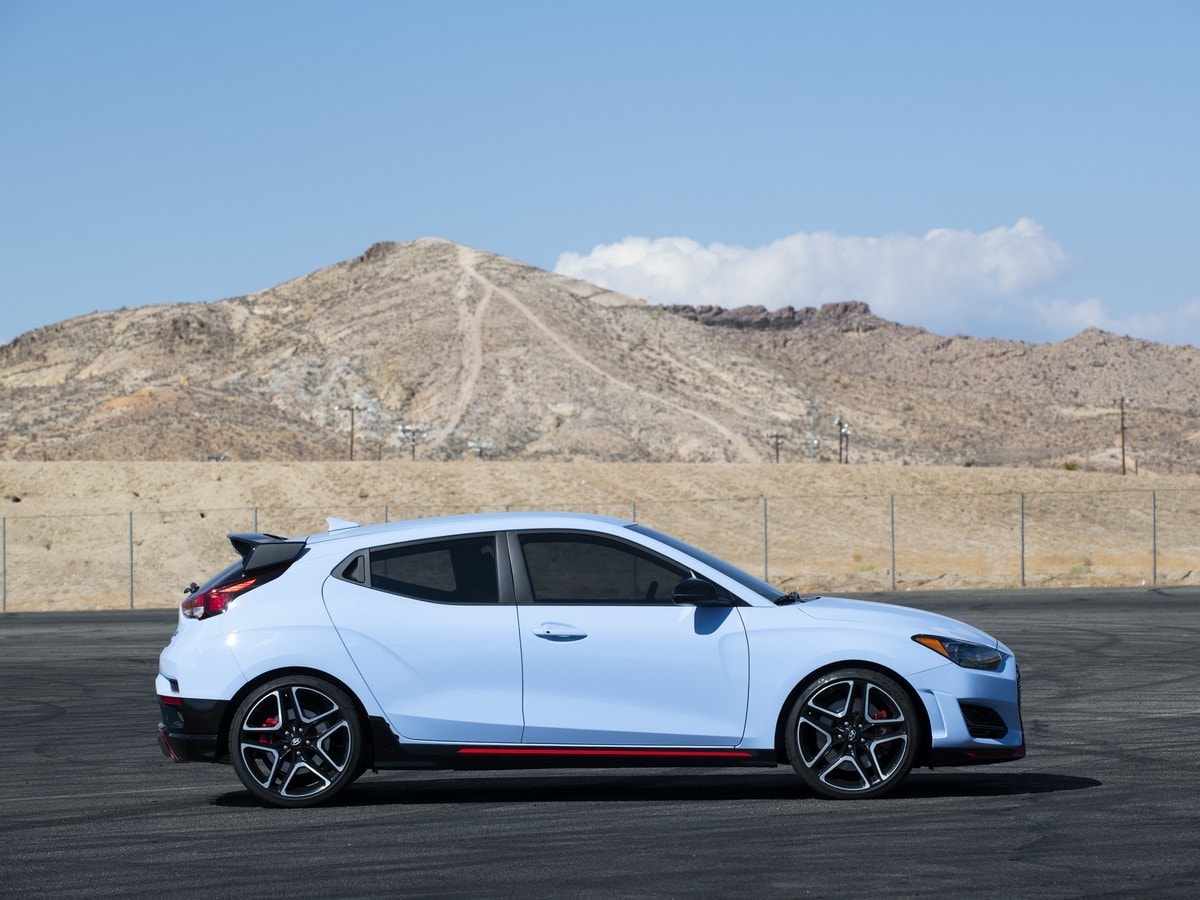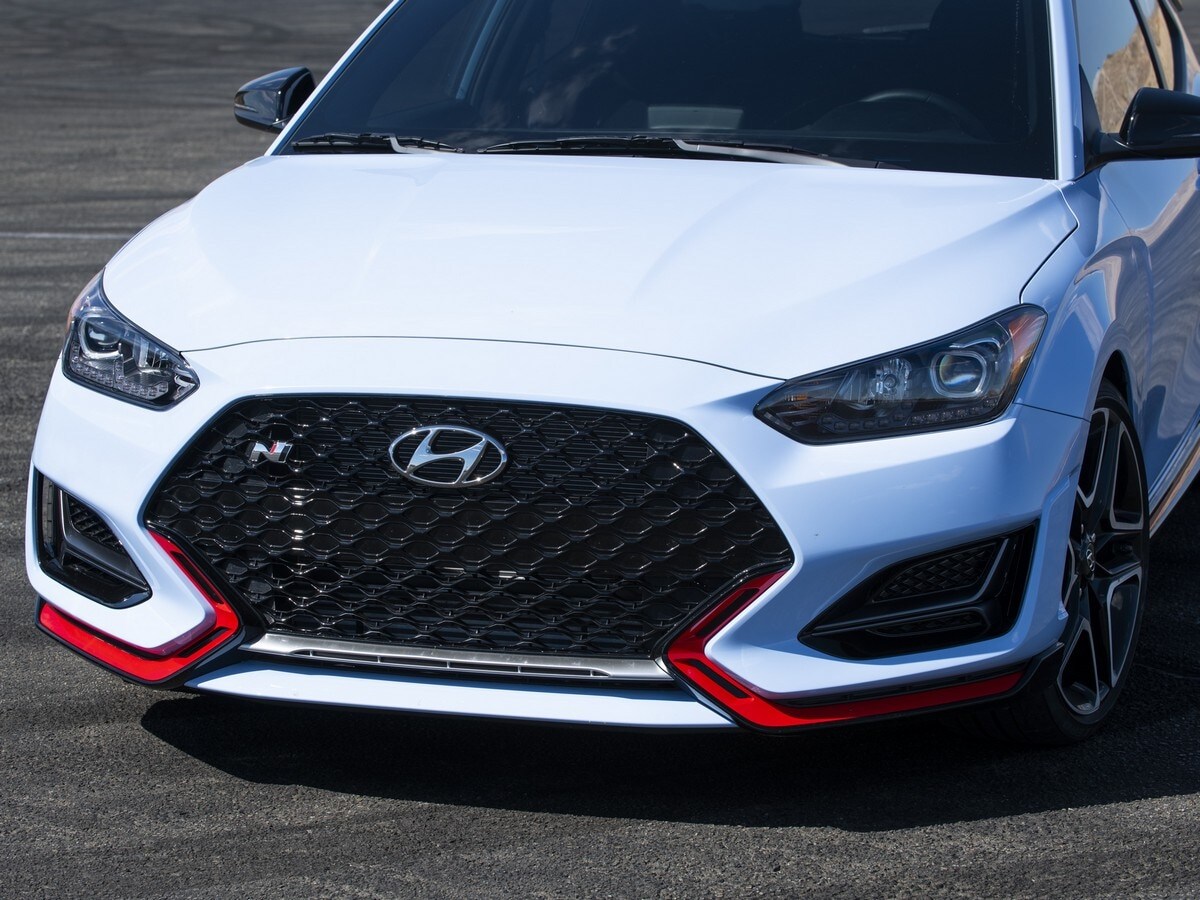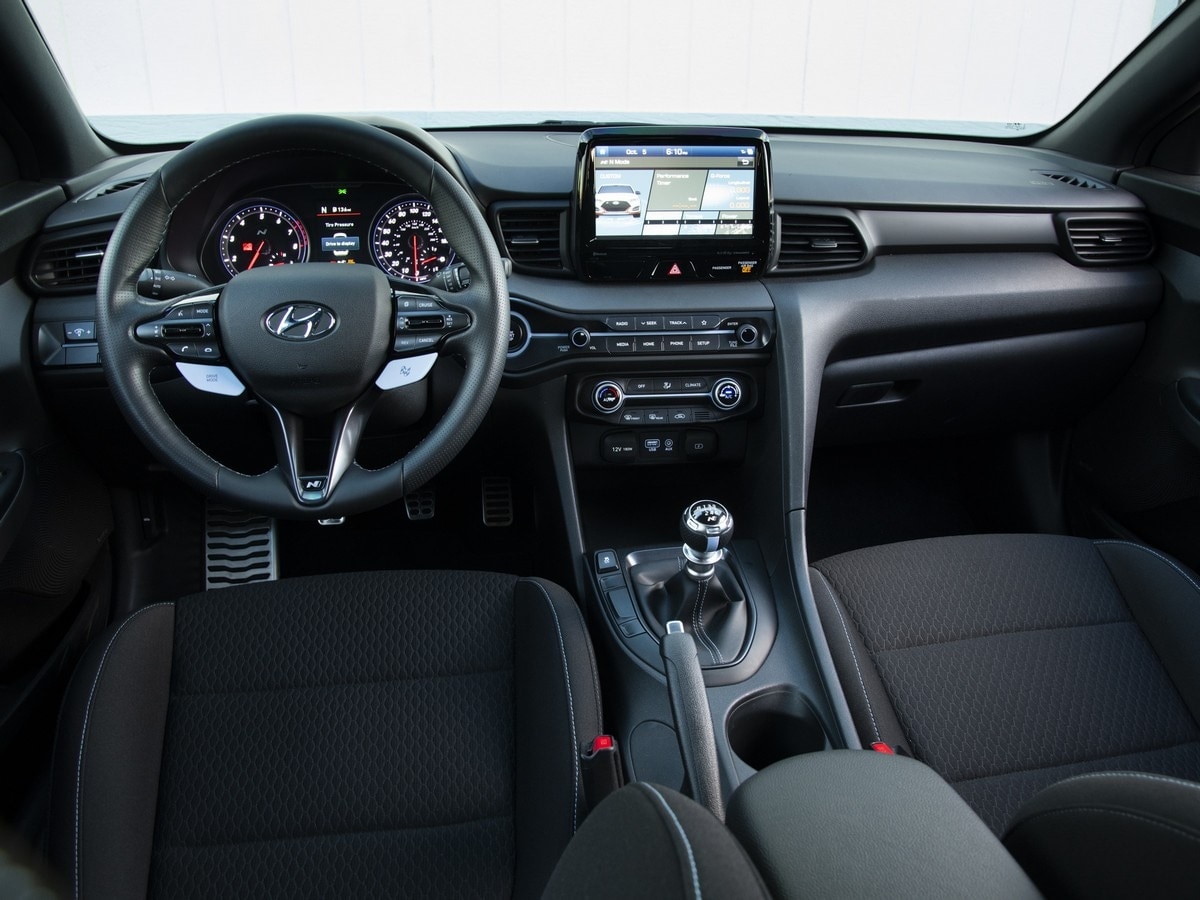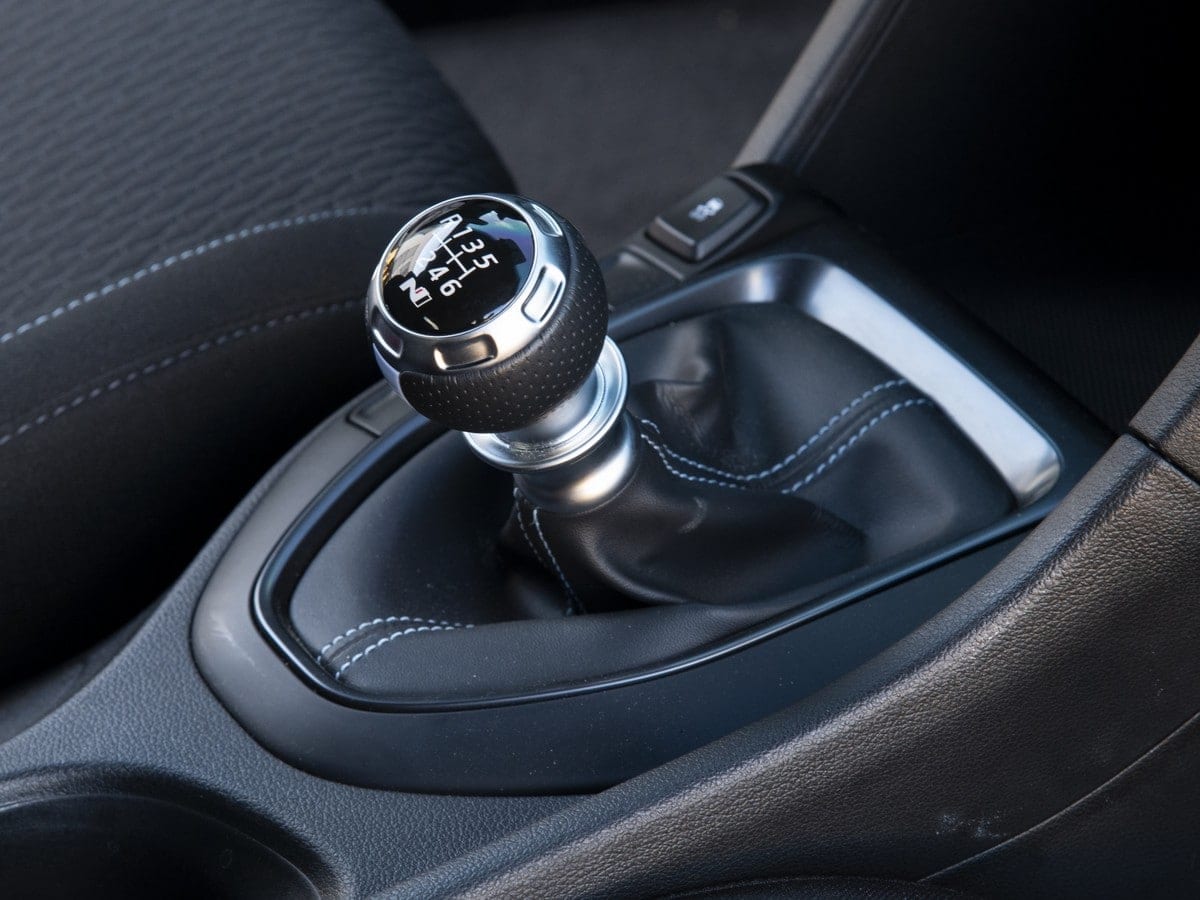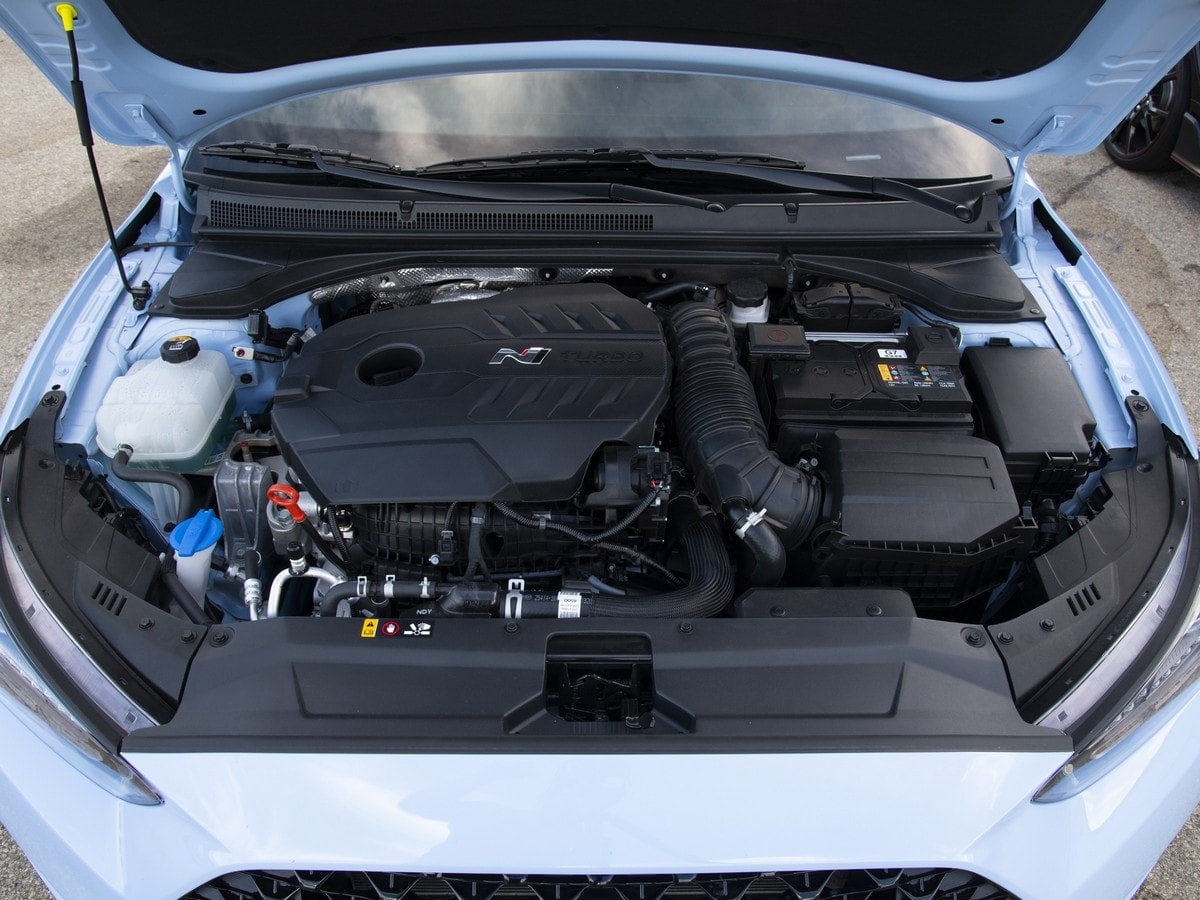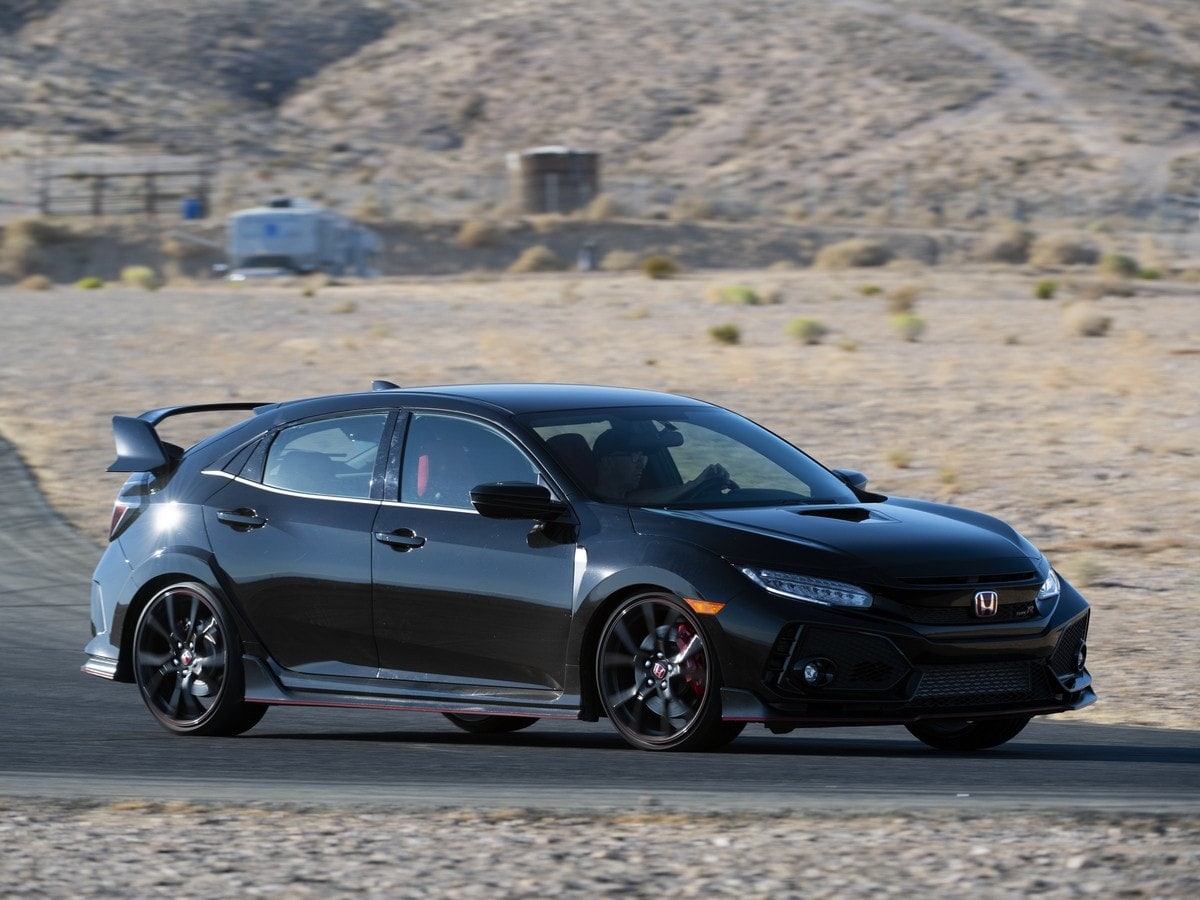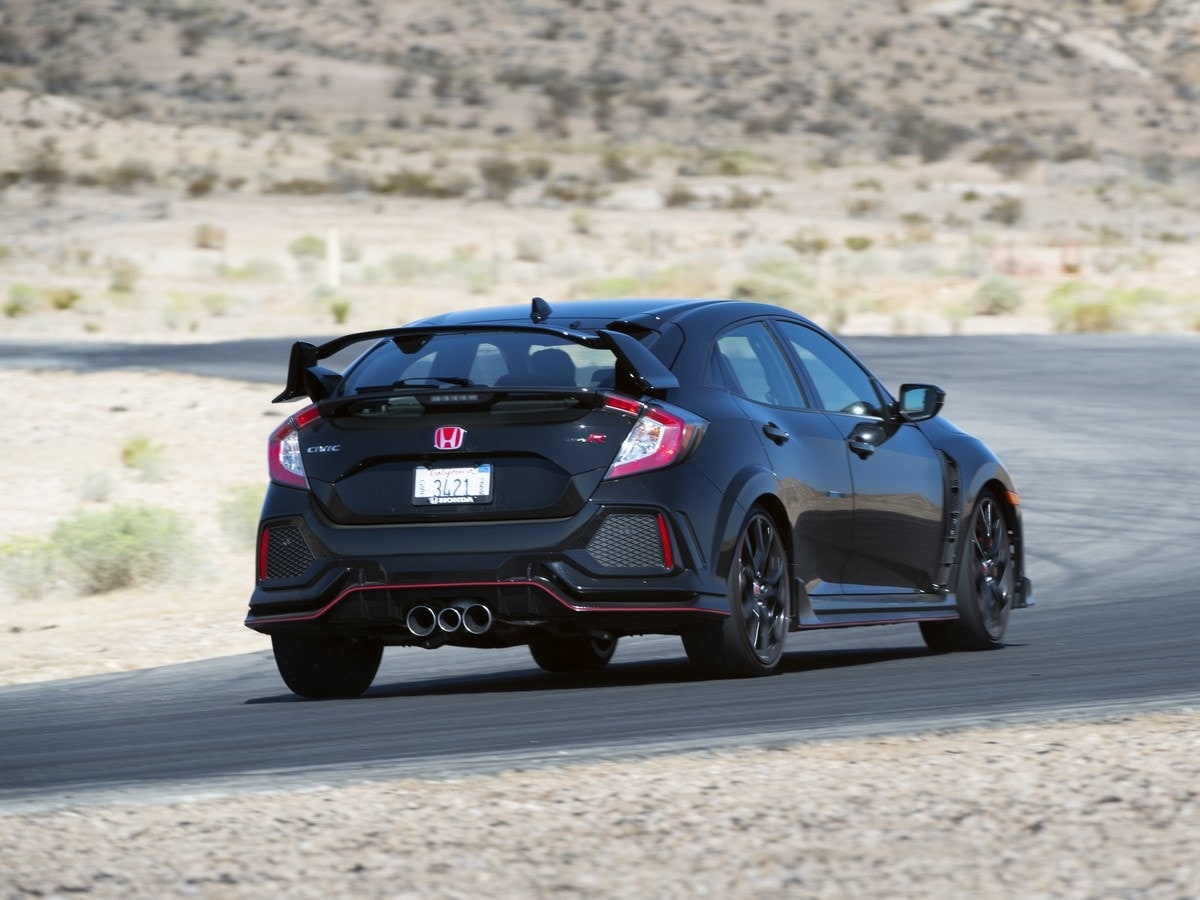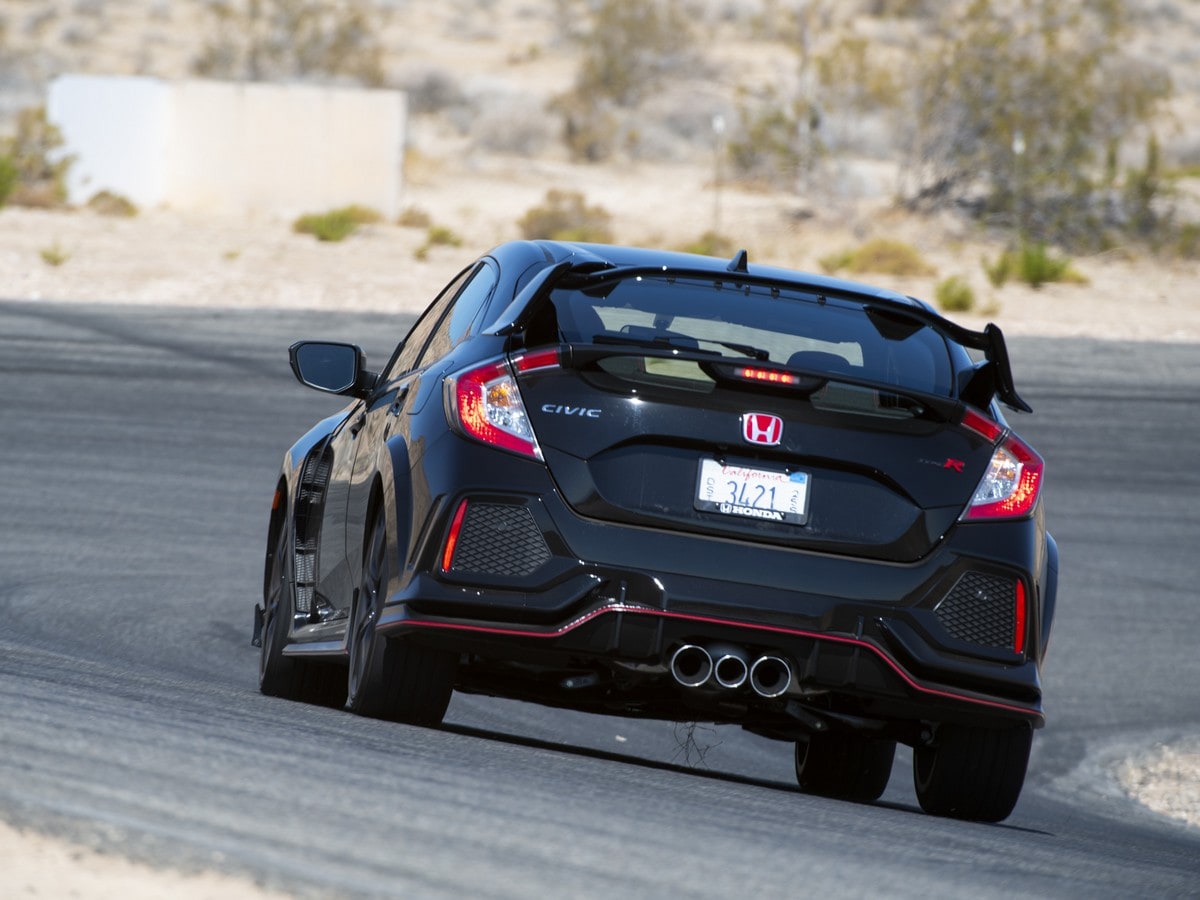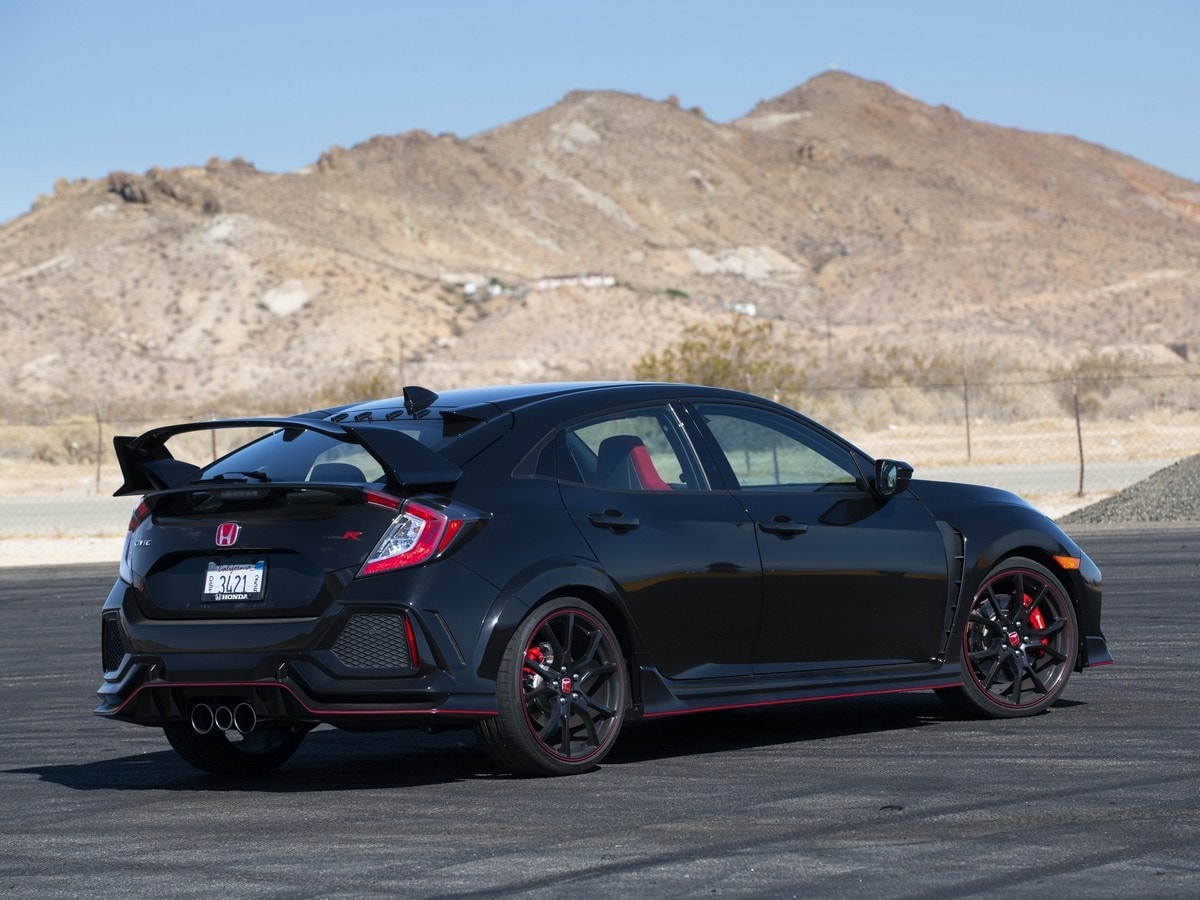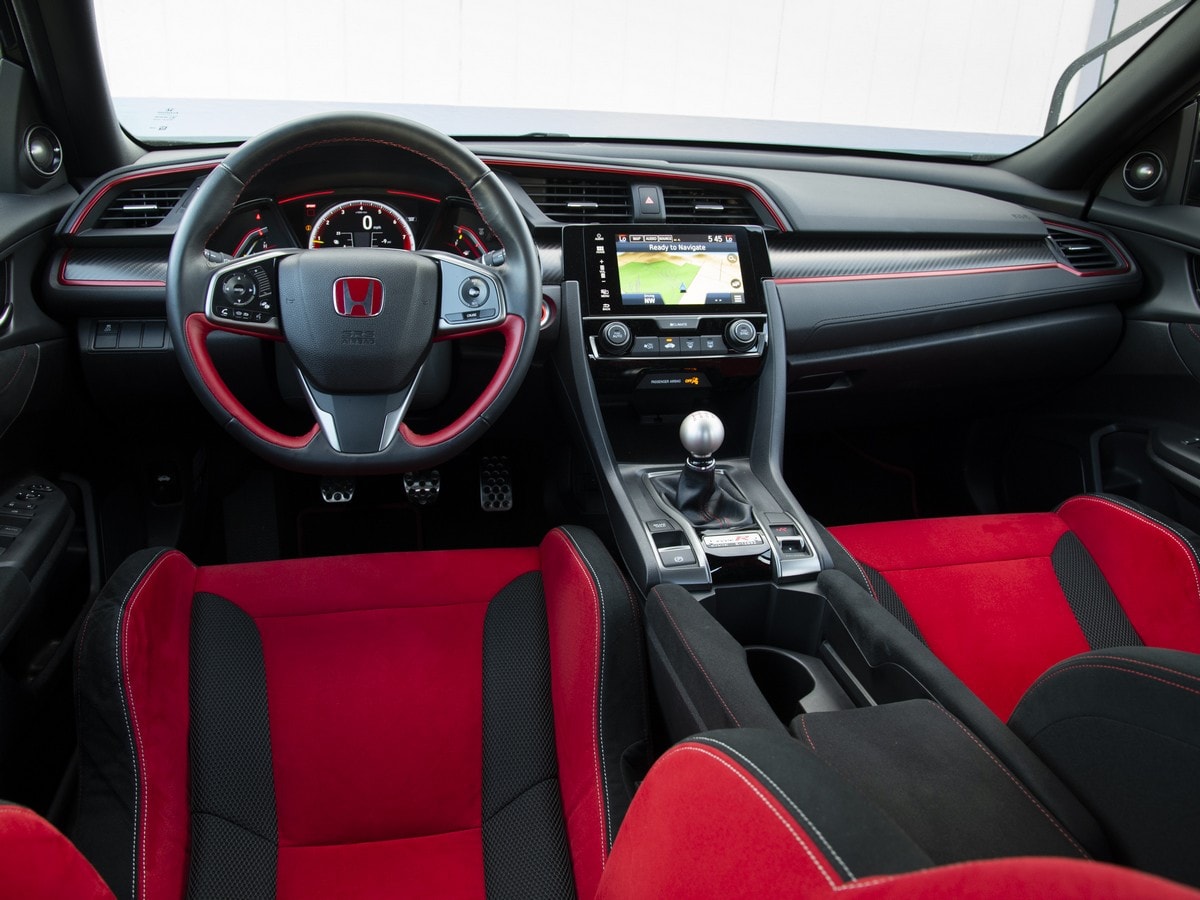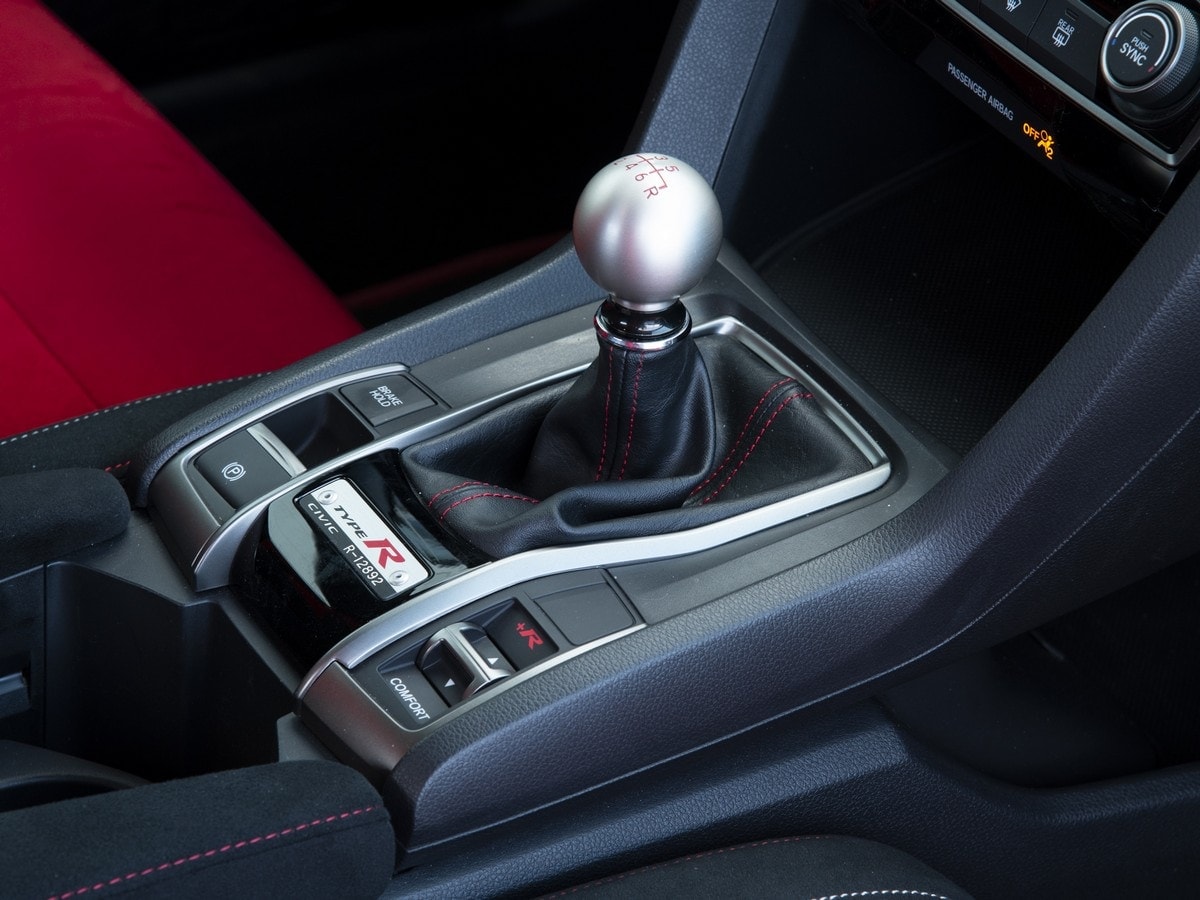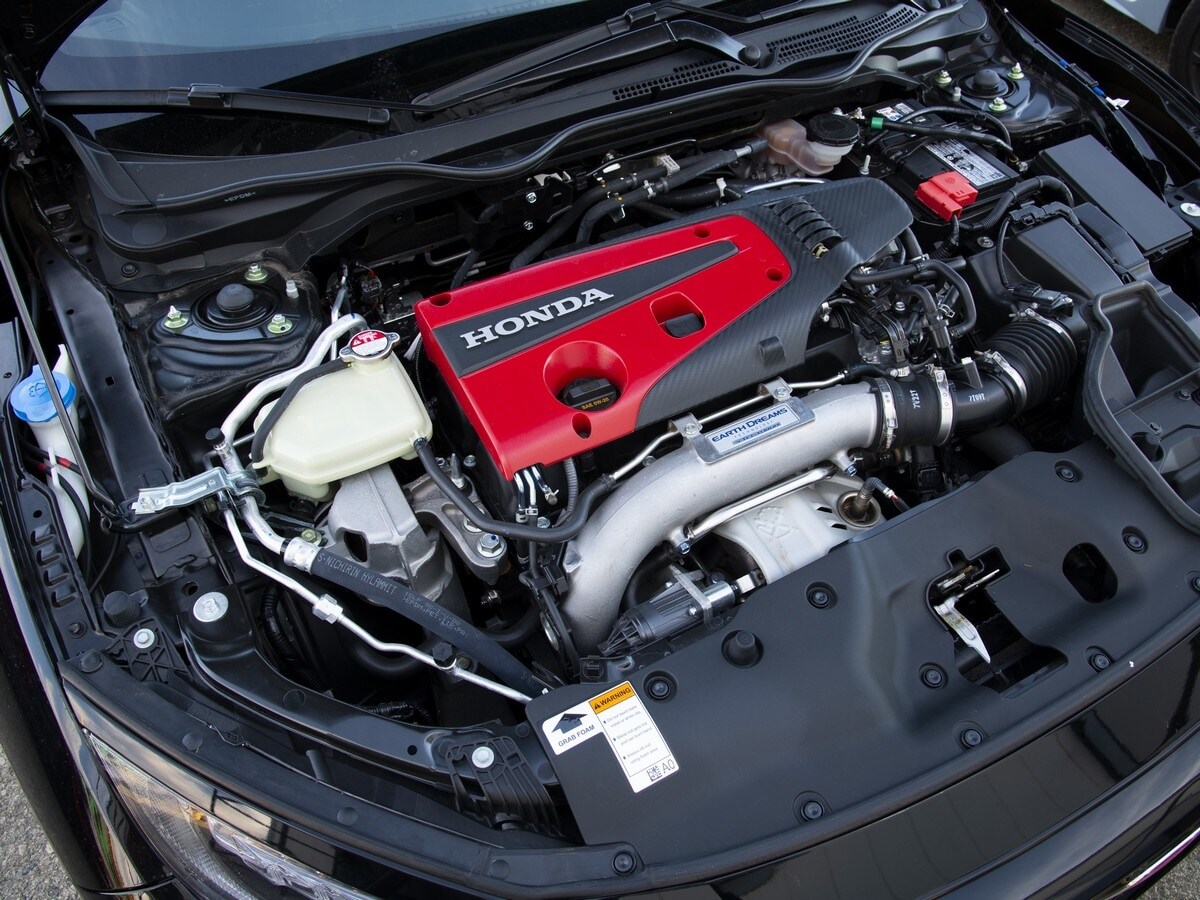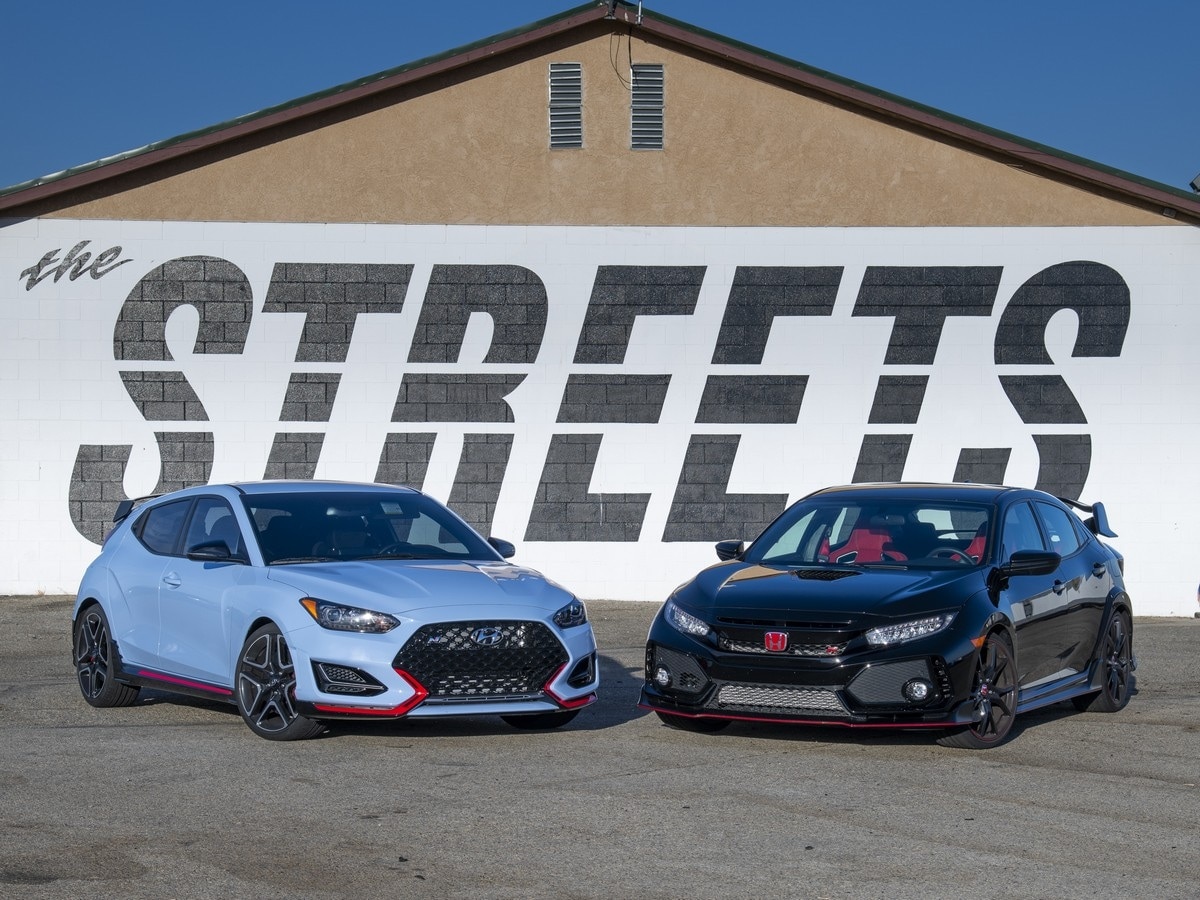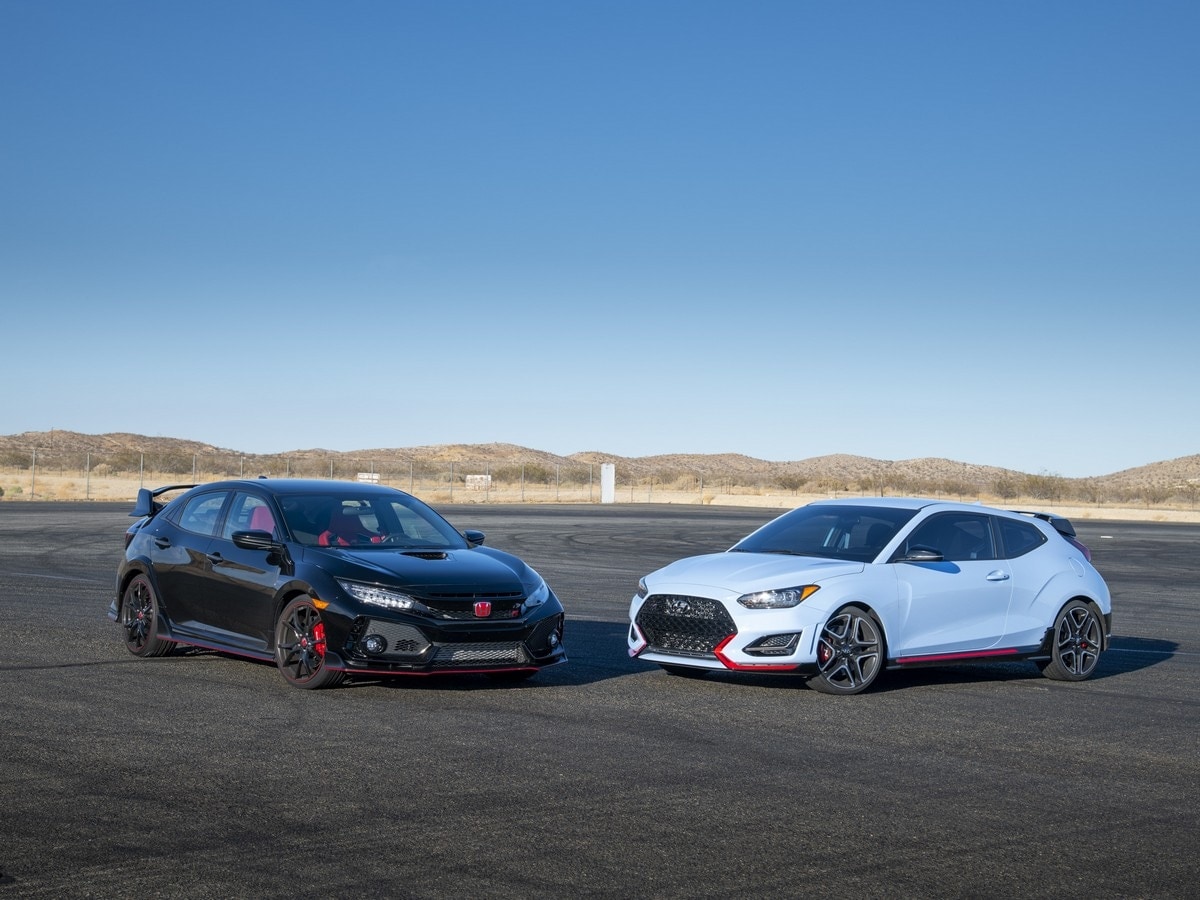- The ultimate hot-like-fire small hatchbacks from Honda and Hyundai
- Each with its own distinct high-performance personality
- Pricing will start dramatically under $40,000
- One of these cars won the KBB Performance Car Best Buy of 2019 award
The “hot-hatch” segment — a praising nickname for performance-oriented compact hatchbacks — originated in the mid-1970s with the launch of the Volkswagen GTI. Although initially developed as a factory skunkworks project, the concept of a sporty and fun-to-drive version of a basic economy car resonated well with consumers – the world’s first “hot-hatch” sold nearly half-a-million units.
More than 40 years later, the hot-hatch segment remains popular – yet the performance of today’s segment leaders is astronomically higher.
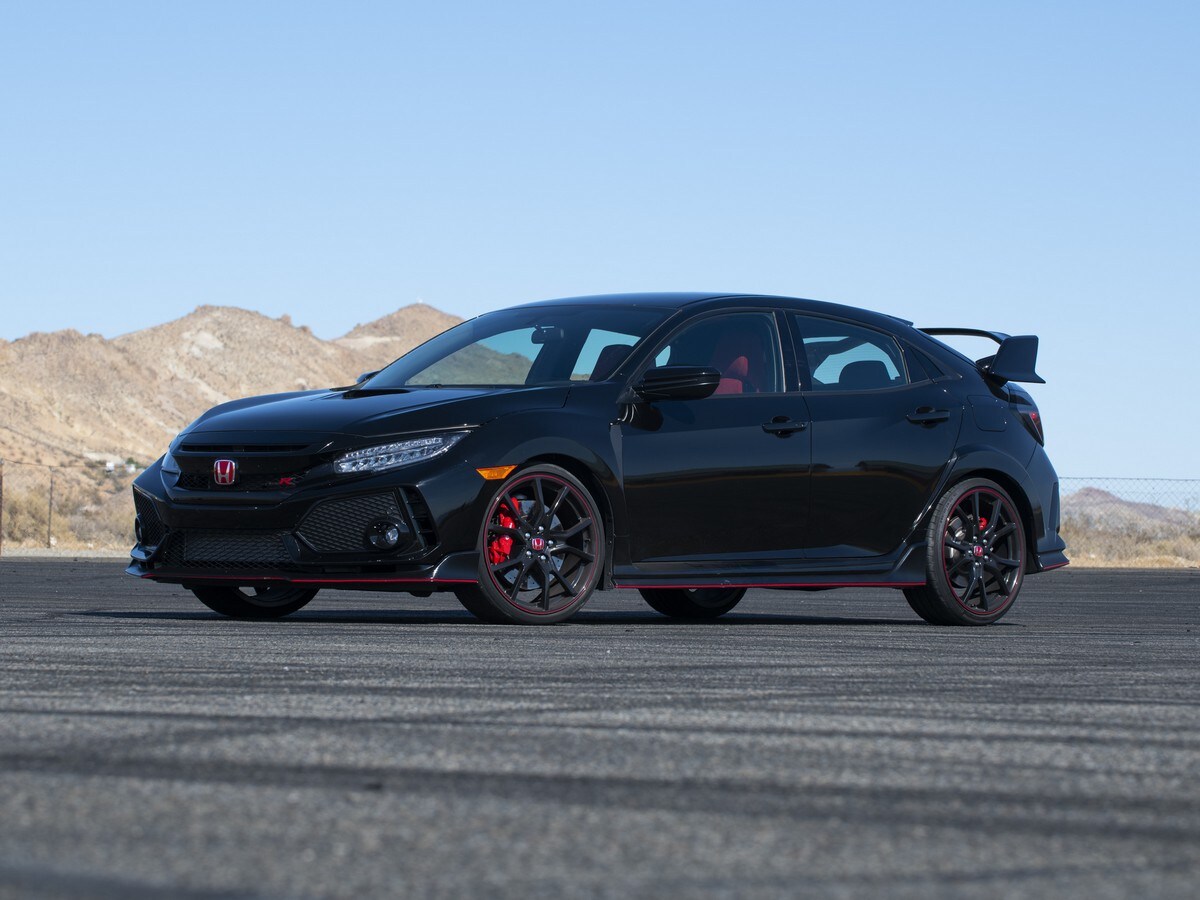
2019 Honda Civic Type R
The undisputed champion of the front-wheel-drive hot-hatch segment is the Honda Civic Type R, which debuted in 2017. With aggressive boy-racer styling, radical body flares, and a massive rear wing, passers-by immediately recognize that this is no pedestrian, eco-minded, 5-door Civic. If bystanders catch a longer stare, they’ll notice oversized drilled brake rotors and bright red Brembo calipers hidden within its 20-inch alloy wheels. Peering inside, they’ll observe heavily bolstered sport bucket seats with colored inserts and contrasting stitching on the upholstery, all set in front of a meaty 3-spoke sport steering wheel.
At the heart of the Civic Type R is a turbocharged 2.0-liter 4-cylinder, tuned to deliver 306 horsepower and 295 lb-ft of torque. The standard gearbox is a 6-speed manual – Honda doesn’t offer this hot-hatch with an automatic transmission. The package is completed with sport suspension, a limited-slip differential, and uber-sticky Continental performance tires. While many find it peculiar that the Type R is manufactured in England — not Japan or the States — its unexpected country of origin isn’t nearly as unusual as its 3-pipe, center-mounted, exhaust system.
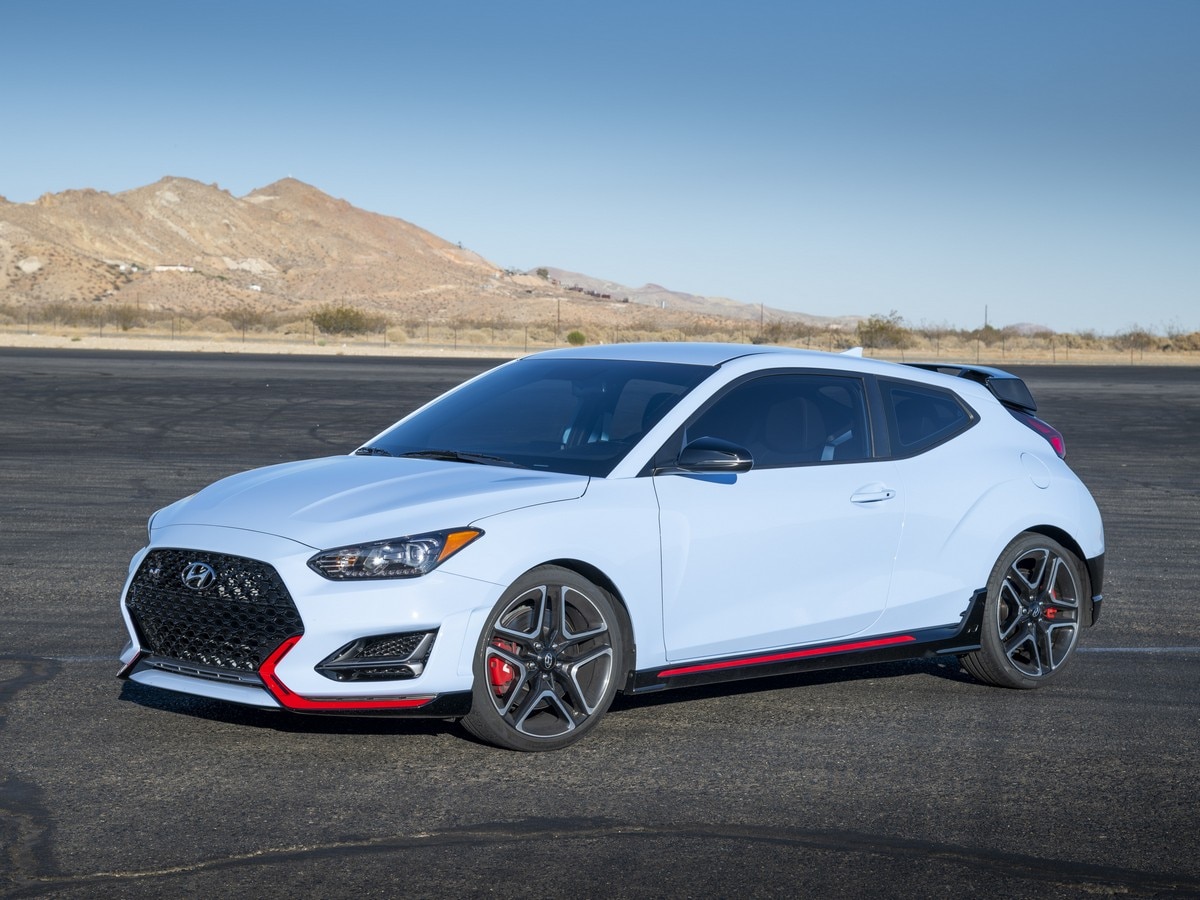
2019 Hyundai Veloster N
Fresh on the automotive scene is the all-new Hyundai Veloster N — the automaker’s highest-performing model yet. Based on the 2nd-generation Veloster, and still boasting the unique asymmetrical two-plus-one-door hatchback configuration, the N variant is visually much more subdued in execution when compared to its Honda rival. The range-topping Veloster is fitted with slick-looking aero add-ons, but they are well integrated into the overall design – overlook the contrasting red exterior accents, and the layperson may not even notice its go-fast goodies.
Yet a close examination reveals big sliding-caliper brakes and huge rotors inside the optional 19-inch wheels (wrapped in high-performance Pirelli tires). The front and rear fascia are more angular and aggressive, and the rear wing is slightly larger and more prominent. The passenger cabin is fitted with a thick steering wheel, while front passengers enjoy sport seats with tall bolsters and light blue belts – the N performance brand’s signature color.
Powering the Veloster N we tested is a turbocharged 2.0-liter 4-cylinder, which is rated at 275 horsepower and 260 lb-ft of torque. Like the Honda, it arrives with a standard 6-speed manual gearbox sending power to the front wheels through a limited-slip differential. The exhaust tips on the standard Veloster 2.0 exit in the middle, yet the upgraded N model moves them to each side of the rear valance – the overall appearance is European, despite being manufactured in Korea.
Interiors that Set the Tone
Hyundai and Honda have taken two very different approaches to interior design. The Veloster N is more conventional — traditional, in a sense — with a primary instrument cluster defined by round analog gauges (tachometer, speedometer, fuel level and coolant temperature) and a small multifunction display in the middle. The Type R is more futuristic — technically advanced — with a primary digital display that alters its appearance based on the drive mode. The unique themes are continued throughout their cabins, with Hyundai using traditional round knobs and rectangular buttons. Honda, on the other hand, relies on its infotainment stack for many actions, and uses frustrating sliders for the audio volume control (the company has listened to the complaints and is bringing the “volume knob” back).
While Honda has chosen lively contrasting colors — bright red inserts on the seats, steering wheel, and dash trim — and grippy Alcantara upholstery (contrasted with plenty of fake carbon fiber trim), the visuals in the Hyundai are much more subdued. Except for a few splashes of N-signature light blue, it is rather dark and monochromatic. The cabin of the Hyundai is subdued and demure, yet from the driver’s seat of the Type R — its polar opposite in terms of execution — it is impossible to overlook its go-fast mission.
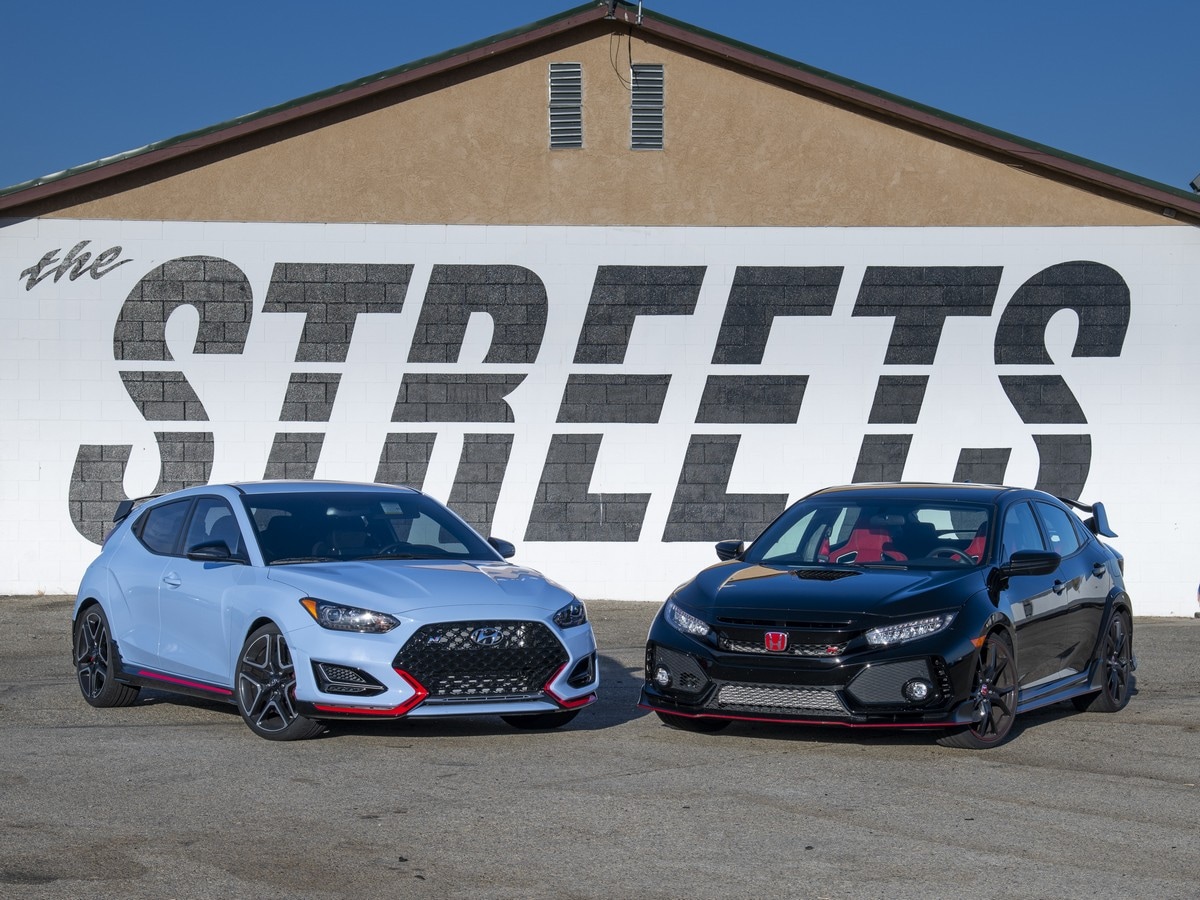
A Pair of Compact Hot-Hatch Rockets
Credit the engineering teams at Hyundai and Honda for doing an exemplary job comprehensively upgrading each of the vehicles from their economy car roles to the new high-performance mission – any standard Veloster or Civic owners who believe they can simply bolt-on a few parts to arrive at the same level as the N and Type R are seriously misguided.
Toggle the Honda’s driving mode switching (located on the lower right of the shifter) into “+R” and the dashboard glows red as the dampers firm, steering quickens, throttle response improves, and the stability control is remapped. Mash the throttle, pause for a nanosecond as the turbocharger spools, and then hang on while the Type R blasts off. Gearing is short, but that means power is always on tap as the engine is kept in its sweet spot. Dive into the corner, flick the steering wheel and the R responds immediately – supercar levels of responsiveness. Cornering grip is phenomenal, too, as the rear tires track tenaciously behind the fronts. Despite its front-wheel-drive architecture, the hatchback doesn’t scrub its front end or understeer – it just sticks and goes any direction it is turned with astonishing agility. It is a fact that the Honda Civic Type R can legitimately hang with Porsches.
Configuring the Hyundai into its track-ready mode is effortless – simply depress the “N” switch on the bottom half of the steering wheel. Down a bit on power compared to the Type R, the Veloster N doesn’t accelerate with the same livid ferociousness as its rival, but its engine doesn’t feel as peaky either – it’s more tractable throughout the rev range. With slightly less aggressive tires, the Hyundai also lacks some of the Honda’s steering sharpness – yet it holds the corner with equal resolve, thanks to a remarkable electronically controlled limited-slip differential that keeps everything in perfect balance. The Hyundai is unbelievably precise — point it exactly where you want it to go, and it does.
And, while the Honda’s exhaust note is lost during spirited driving, the Hyundai’s pipes pop and cackle delightfully during each shift – easily heard from within the cabin – the car sounds superb.
If the Shoe Fits
Spend a full day driving the Veloster N and Civic Type R back-to-back and the winner is obvious – it’s the one that matches your character.
The Honda Civic Type R is arguably the highest performing front-wheel drive vehicle that we have ever tested. It delivers everything its boy-racer styling promises – it has been engineered for an enthusiast that puts handling, acceleration, and braking capabilities at the top of their list. Drive the Honda for hours on end, and its tight seats, short gearing, and firm ride continuously remind occupants of its true objectives.
The Hyundai Veloster N delivers nearly all the Honda’s performance, yet with only a minimal amount of high-performance compromise. The cabin of the Veloster N is more comfortable, its ride is a bit smoother, the manual gearbox is easier to live with — and you don’t have to explain its rear wing to strangers.
Honda Civic Type R and Hyundai Veloster N Interior and Exterior Photos
